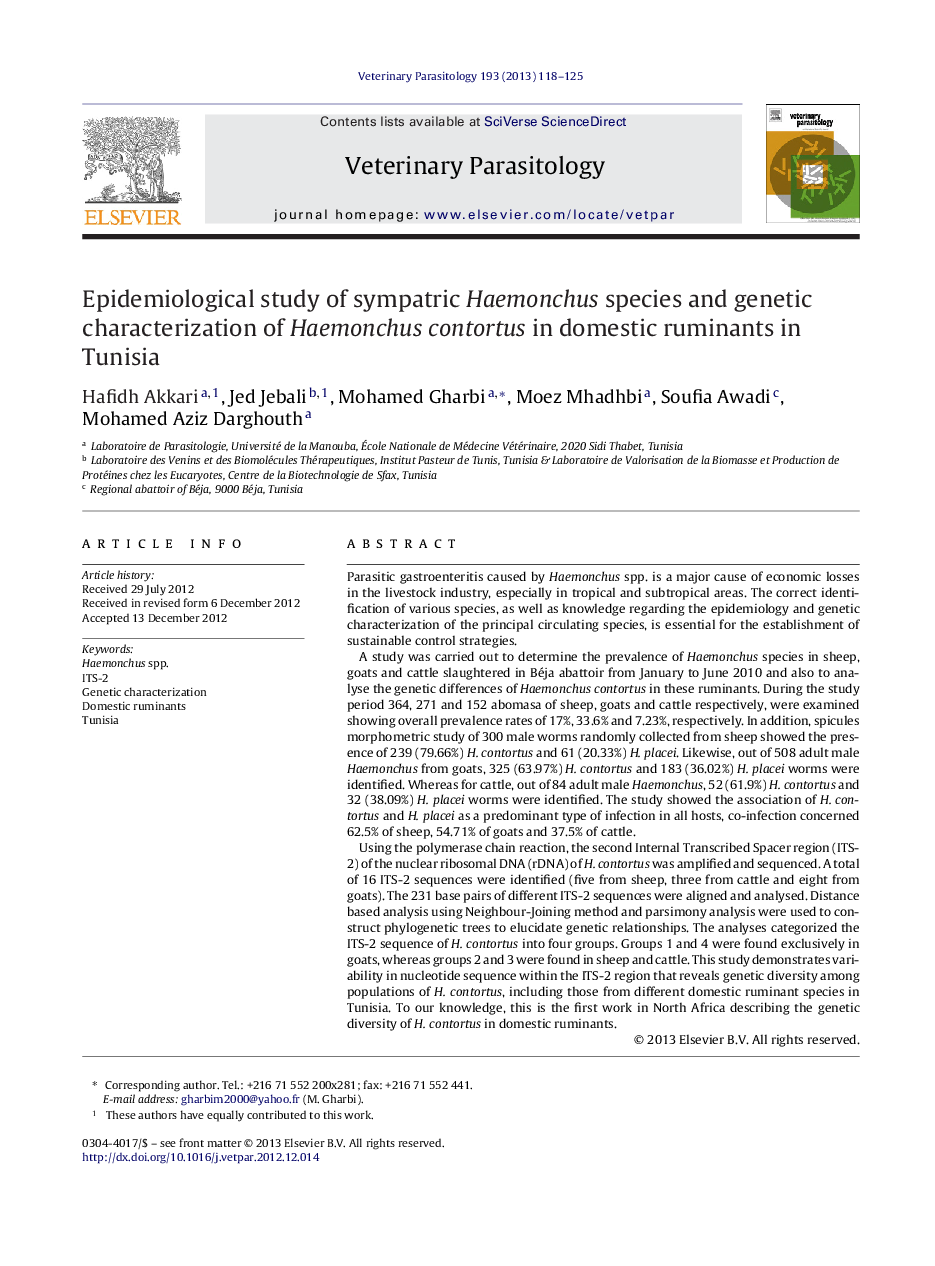| کد مقاله | کد نشریه | سال انتشار | مقاله انگلیسی | نسخه تمام متن |
|---|---|---|---|---|
| 5804291 | 1555703 | 2013 | 8 صفحه PDF | دانلود رایگان |

Parasitic gastroenteritis caused by Haemonchus spp. is a major cause of economic losses in the livestock industry, especially in tropical and subtropical areas. The correct identification of various species, as well as knowledge regarding the epidemiology and genetic characterization of the principal circulating species, is essential for the establishment of sustainable control strategies.A study was carried out to determine the prevalence of Haemonchus species in sheep, goats and cattle slaughtered in Béja abattoir from January to June 2010 and also to analyse the genetic differences of Haemonchus contortus in these ruminants. During the study period 364, 271 and 152 abomasa of sheep, goats and cattle respectively, were examined showing overall prevalence rates of 17%, 33.6% and 7.23%, respectively. In addition, spicules morphometric study of 300 male worms randomly collected from sheep showed the presence of 239 (79.66%) H. contortus and 61 (20.33%) H. placei. Likewise, out of 508 adult male Haemonchus from goats, 325 (63.97%) H. contortus and 183 (36.02%) H. placei worms were identified. Whereas for cattle, out of 84 adult male Haemonchus, 52 (61.9%) H. contortus and 32 (38.09%) H. placei worms were identified. The study showed the association of H. contortus and H. placei as a predominant type of infection in all hosts, co-infection concerned 62.5% of sheep, 54.71% of goats and 37.5% of cattle.Using the polymerase chain reaction, the second Internal Transcribed Spacer region (ITS-2) of the nuclear ribosomal DNA (rDNA) of H. contortus was amplified and sequenced. A total of 16 ITS-2 sequences were identified (five from sheep, three from cattle and eight from goats). The 231 base pairs of different ITS-2 sequences were aligned and analysed. Distance based analysis using Neighbour-Joining method and parsimony analysis were used to construct phylogenetic trees to elucidate genetic relationships. The analyses categorized the ITS-2 sequence of H. contortus into four groups. Groups 1 and 4 were found exclusively in goats, whereas groups 2 and 3 were found in sheep and cattle. This study demonstrates variability in nucleotide sequence within the ITS-2 region that reveals genetic diversity among populations of H. contortus, including those from different domestic ruminant species in Tunisia. To our knowledge, this is the first work in North Africa describing the genetic diversity of H. contortus in domestic ruminants.
Journal: Veterinary Parasitology - Volume 193, Issues 1â3, 31 March 2013, Pages 118-125